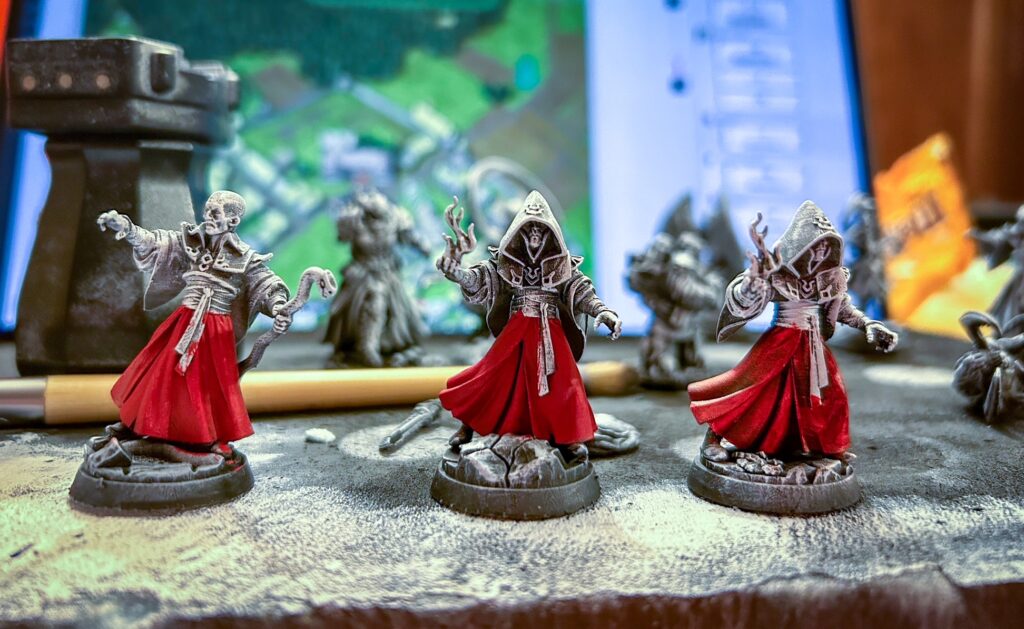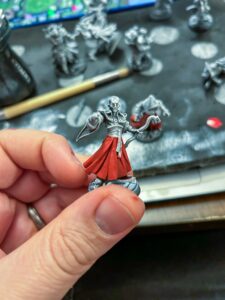Duncan Rhodes Two Thin Coats: One paint review

We finally tried out Duncan Rhodes Painting Academy’s Two Thin Coats.
The line was introduced with 60 paints a couple years ago, and it was expanded with an additional 60 colors this year. Like some other lines, the paints are arranged in triads that work together: A midtown, a shadow and a highlight. That makes it easy for painters
While a lot of reviewers get a whole set of paints from the company, we got just one paint. We bought it and put it through its paces to see how it compares to other paints.
We picked up a bottle of Sanguine Scarlet from our favorite local comic book shop, and it ran us $4.99.
To test, we tried Sanguine Scarlet on red wizard models we 3D printed from Titan Forge Miniatures. Each model was primed with black and given a dry brush in Vallejo neutral grey followed by a dry brush of Vallejo white. (The typical “slap chop” priming job.)
For this test, our comparison paints were P3 Skorne Red and Citadel contrast Blood Angels Red.

Before we get to the paint itself, let’s talk about the dropper bottles. Duncan Rhodes’ bottles are nice. They’re similar circumference to Army Painter and Vallejo paints, but they are shorter and thus contain a bit less paint. Each bottle does have an an agitator bead inside, which is nice. I add an Army Painter steel agitator ball to each of my paints, but I didn’t need to do it to this one!
One small thing: The bottle was stiff and a bit hard to squeeze. Still, it wasn’t tough to get a couple drops out for our test paint.
But what about the paints? In short: My experience with this one paint was fantastic.

Duncan Rhodes paints are smooth. Real smooth. The Sanguine Scarlet had a nice, thin consistency that went on very smoothly. (Did I say smooth? Smooth.) Comparatively the P3 is a little thicker, and you could see just a little more texture in the paint.
As for two thin coats? Not necessary on our test minis. One coat of Sanguine Scarlet had fantastic coverage. The priming and dry brush step was completely covered, and even the bright white highlights didn’t show through.
Comparatively, the P3 didn’t have quite as good coverage. (Though I like P3 paints, they usually do need two coats.) Contrast paints are intended to be thin, and so the highlights came through quite visibly. (I know Duncan Rhodes paints aren’t like Contrast, but I did want them as a control group to see how the highlighting showed through.)

As for finish, the Duncan Rhodes paint dried quite matte and perfectly smooth. It was a really, really nice finish.
All in all, using the Duncan Rhodes Painting Academy paints was quite a nice experience. The paints are perfectly thin and smooth, and the finish is fantastic. They’re traditional paints — not like Contrast paints or Speedpaints — and I highly recommend these if that’s the kind of paint you’re looking for.
Now, will I be replacing all my paints with Two Thin Coats? Probably not. I have tons of paints. But these will definitely be in the running as my old paints run dry.






